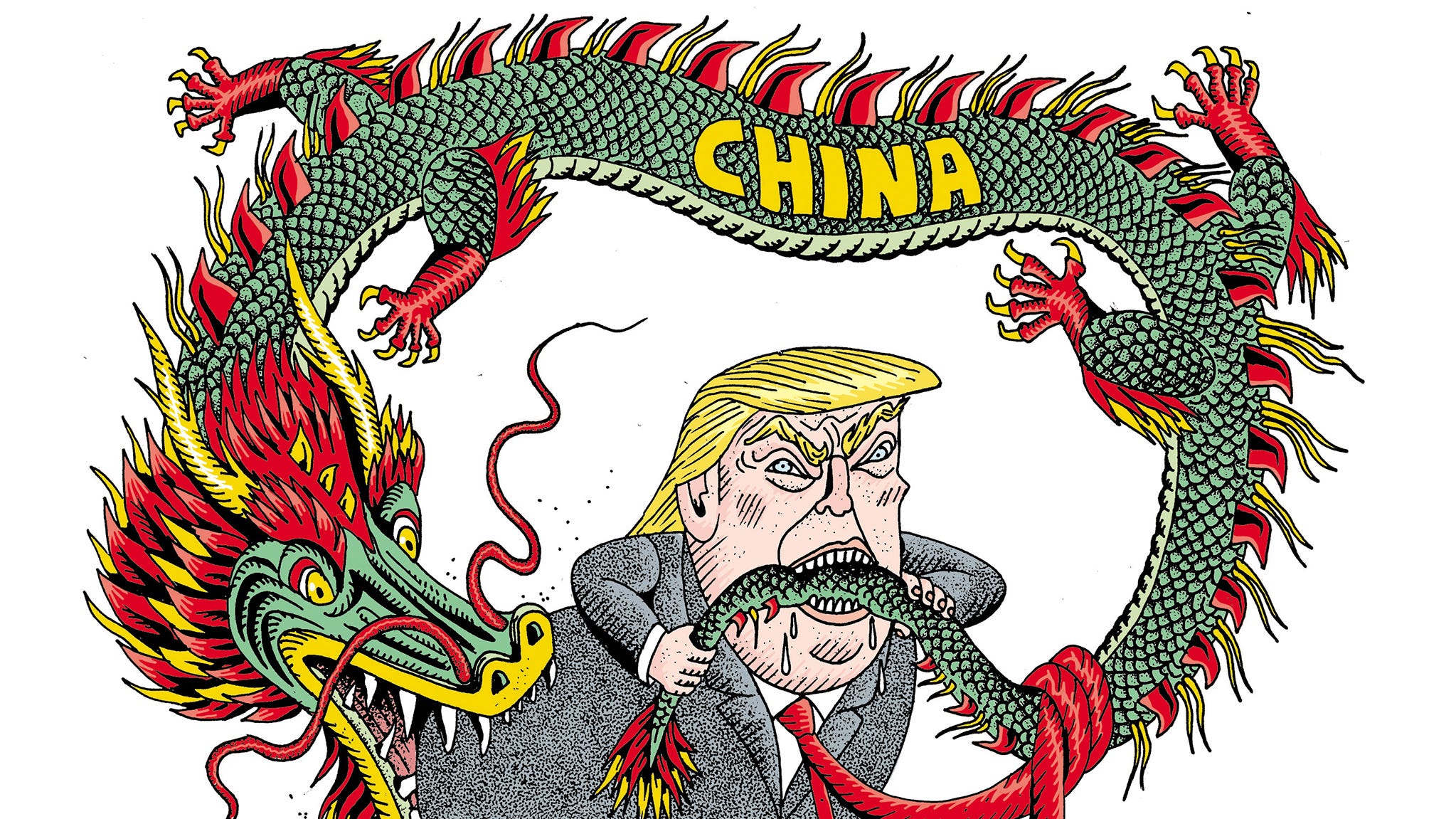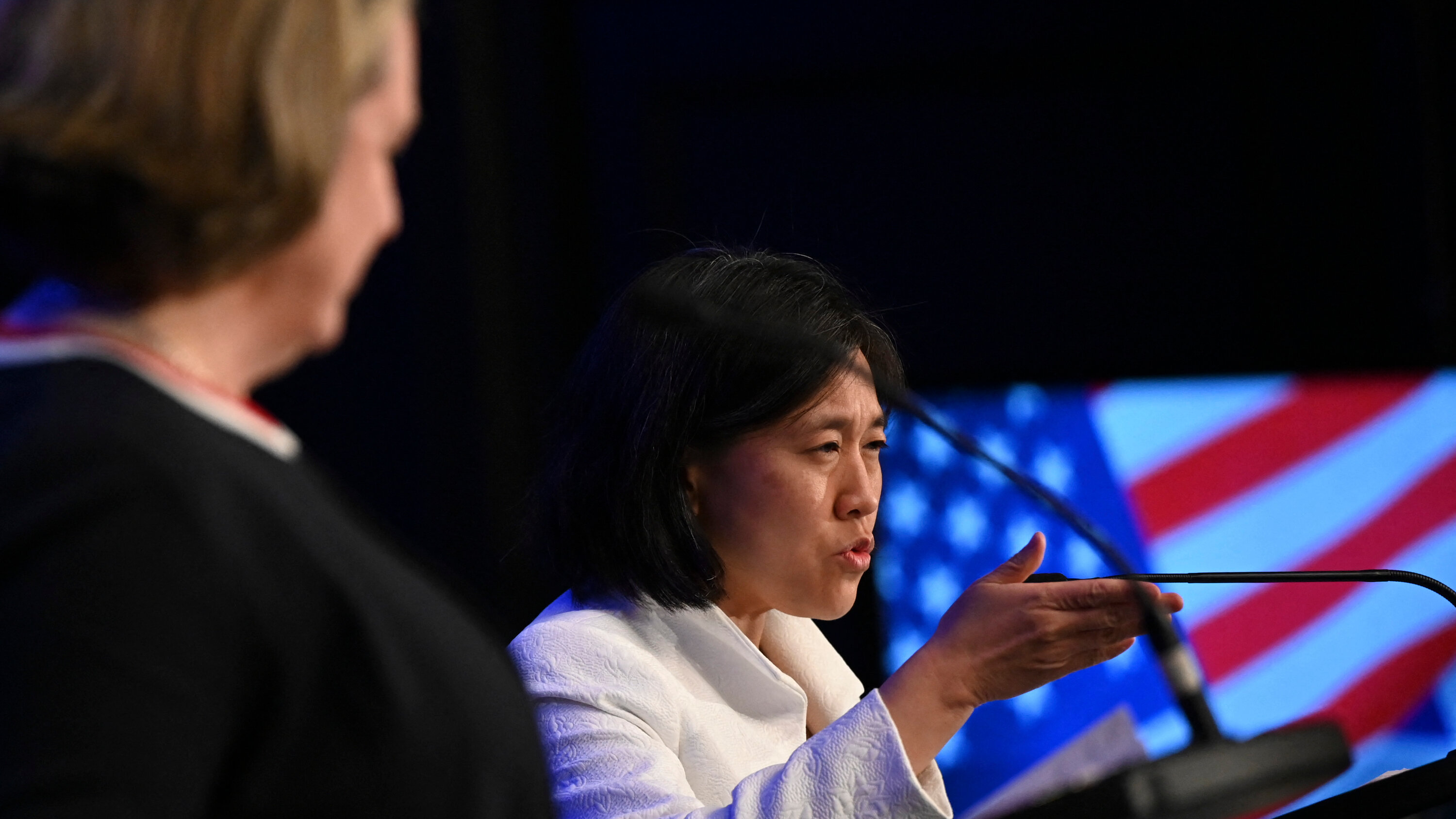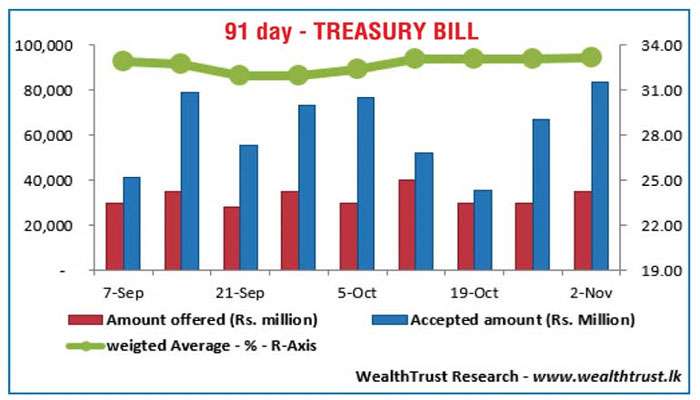Trump's China Trade Negotiation: Focus On Tariff Relief And Rare Earths

Table of Contents
Tariff Relief as a Central Negotiating Point
The Trump administration's approach to trade with China was characterized by a significant escalation of tariffs. This section analyzes the imposition of these tariffs and the subsequent negotiations for their reduction.
The Imposition of Tariffs
The Trump administration initiated a trade war with China by imposing tariffs on a wide range of Chinese goods. This action, justified as a response to what the administration deemed unfair trade practices and intellectual property theft, began in 2018 and unfolded in several phases.
- Stated Goals: The primary stated goals of these tariffs were to protect American jobs, level the playing field for American businesses, and force China to make significant concessions on intellectual property rights and trade imbalances.
- Economic Impact: The tariffs had a substantial impact on both the US and Chinese economies. While some sectors experienced short-term gains, others faced significant challenges. Studies by organizations like the Peterson Institute for International Economics showed varying estimates of the negative impact on US GDP growth. China retaliated with its own tariffs, further disrupting global trade flows.
- Retaliatory Tariffs: China responded to the US tariffs with its own retaliatory measures, targeting key American agricultural exports and other goods. This tit-for-tat escalation intensified the trade war and impacted global supply chains.
Negotiating Tariff Reductions
Negotiations between the US and China were protracted and complex, involving numerous rounds of talks and high-level officials, most notably Robert Lighthizer, the US Trade Representative. Both sides sought concessions, with the US pushing for tariff reductions and structural changes in Chinese economic practices.
- Tariff Reductions Achieved: The "Phase One" trade deal reached in 2020 resulted in some tariff reductions and a commitment by China to purchase a significant amount of US agricultural goods. However, many tariffs remained in place.
- Phased-in Reductions and Exclusions: Some tariff reductions were phased in over time, while certain goods were excluded from tariffs altogether. These decisions reflected the complex interplay of political and economic considerations.
- Impact on Businesses and Consumers: The tariffs and subsequent reductions affected US businesses and consumers differently. Some businesses benefited from protectionist measures, while others faced higher input costs and reduced competitiveness. Consumers faced higher prices on certain goods.
The Strategic Significance of Rare Earths in the Trade War
The trade war highlighted the strategic importance of rare earth minerals, underscoring China's dominance in their production and processing and the vulnerability of the US to supply chain disruptions.
The Importance of Rare Earths
Rare earth minerals are a group of 17 elements crucial for the production of numerous high-tech applications. China holds a near-monopoly on their processing, controlling a significant share of the global supply chain.
- Key Rare Earth Elements and Applications: Elements like neodymium, dysprosium, and praseodymium are essential components in magnets used in wind turbines, electric vehicles, and military equipment.
- National Security Implications: The US's heavy reliance on China for rare earths posed significant national security concerns, raising fears of potential supply disruptions during times of geopolitical tension.
Rare Earths in Trade Negotiations
While not the central focus of the initial negotiations, the issue of rare earth dependence emerged as a critical aspect of the broader trade relationship. The Trump administration explored strategies to reduce US reliance on China.
- Agreements and Initiatives: The administration initiated several programs aimed at boosting domestic rare earth mining and processing, including funding research and development and exploring alternative supply sources.
- Government Incentives and Policies: Government incentives and policies were implemented to encourage domestic rare earth production and reduce dependence on Chinese suppliers. However, the success of these initiatives remains a subject of ongoing debate.
- Effectiveness of Strategies: Assessing the long-term effectiveness of these strategies requires continued observation. The complexities of establishing domestic rare earth production capacity, including environmental concerns and economic viability, represent significant challenges.
Long-Term Impacts of the Trump China Trade Negotiations
The Trump administration's trade policies had lasting implications for the US, China, and the global economy. These long-term consequences are still unfolding.
Economic Consequences
The tariff war's long-term effects on the US and Chinese economies are complex and continue to be debated. The impact on supply chains and trade relationships remains a topic of ongoing research.
- Inflation and Consumer Prices: The tariffs contributed to inflationary pressures in the US, affecting consumer prices for various goods.
- Changes in Trade Balances: While the trade war initially aimed to reduce the US trade deficit with China, its long-term impact on trade balances is a subject of ongoing analysis.
Geopolitical Implications
The Trump administration's trade policies had significant geopolitical consequences, affecting US relations with China and other global powers.
- Impact on Global Trade and Multilateral Trading System: The trade war raised concerns about the future of global trade and the stability of the multilateral trading system.
- Impact on Alliances and Partnerships: The trade war strained relations with traditional allies who also depended on trade with China.
Conclusion
The Trump administration's China trade negotiations, characterized by significant tariff increases and a focus on securing tariff relief and reducing dependence on Chinese rare earths, left a complex and lasting legacy. While some tariff reductions were achieved, the long-term economic and geopolitical implications continue to unfold. Further research into the intricacies of these Trump China trade negotiations is vital to understanding the current dynamics of US-China relations and the future of global trade. For a deeper dive into the specific details and data surrounding the impact of these negotiations, further research using keywords such as "US-China trade war," "rare earth minerals," and "Trump trade policy" is recommended.

Featured Posts
-
 Experience The Graham Rahal 911 Gt 3 Rs 4 0 A Performance Icon
May 12, 2025
Experience The Graham Rahal 911 Gt 3 Rs 4 0 A Performance Icon
May 12, 2025 -
 Car Crash Involving Prince Andrew Accuser A Four Day Prognosis
May 12, 2025
Car Crash Involving Prince Andrew Accuser A Four Day Prognosis
May 12, 2025 -
 Improving Asylum Shelter Organization Advisory Councils Advocate For E1 Billion Cost Reduction
May 12, 2025
Improving Asylum Shelter Organization Advisory Councils Advocate For E1 Billion Cost Reduction
May 12, 2025 -
 Montego Bay Experiences Beyond The Beaches
May 12, 2025
Montego Bay Experiences Beyond The Beaches
May 12, 2025 -
 White House Rejects Auto Industrys Uk Trade Deal Worries
May 12, 2025
White House Rejects Auto Industrys Uk Trade Deal Worries
May 12, 2025
Latest Posts
-
 Anchor Brewing Company 127 Years And Counting To Closure
May 12, 2025
Anchor Brewing Company 127 Years And Counting To Closure
May 12, 2025 -
 India Pakistan Conflict Escalates 5 Soldiers Killed Truce Remains In Question
May 12, 2025
India Pakistan Conflict Escalates 5 Soldiers Killed Truce Remains In Question
May 12, 2025 -
 San Franciscos Anchor Brewing Company Announces Closure
May 12, 2025
San Franciscos Anchor Brewing Company Announces Closure
May 12, 2025 -
 Bond Trader Sentiment Shifts After Powells Less Dovish Comments
May 12, 2025
Bond Trader Sentiment Shifts After Powells Less Dovish Comments
May 12, 2025 -
 Private Credit Jobs 5 Dos And Don Ts For Applicant Success
May 12, 2025
Private Credit Jobs 5 Dos And Don Ts For Applicant Success
May 12, 2025
